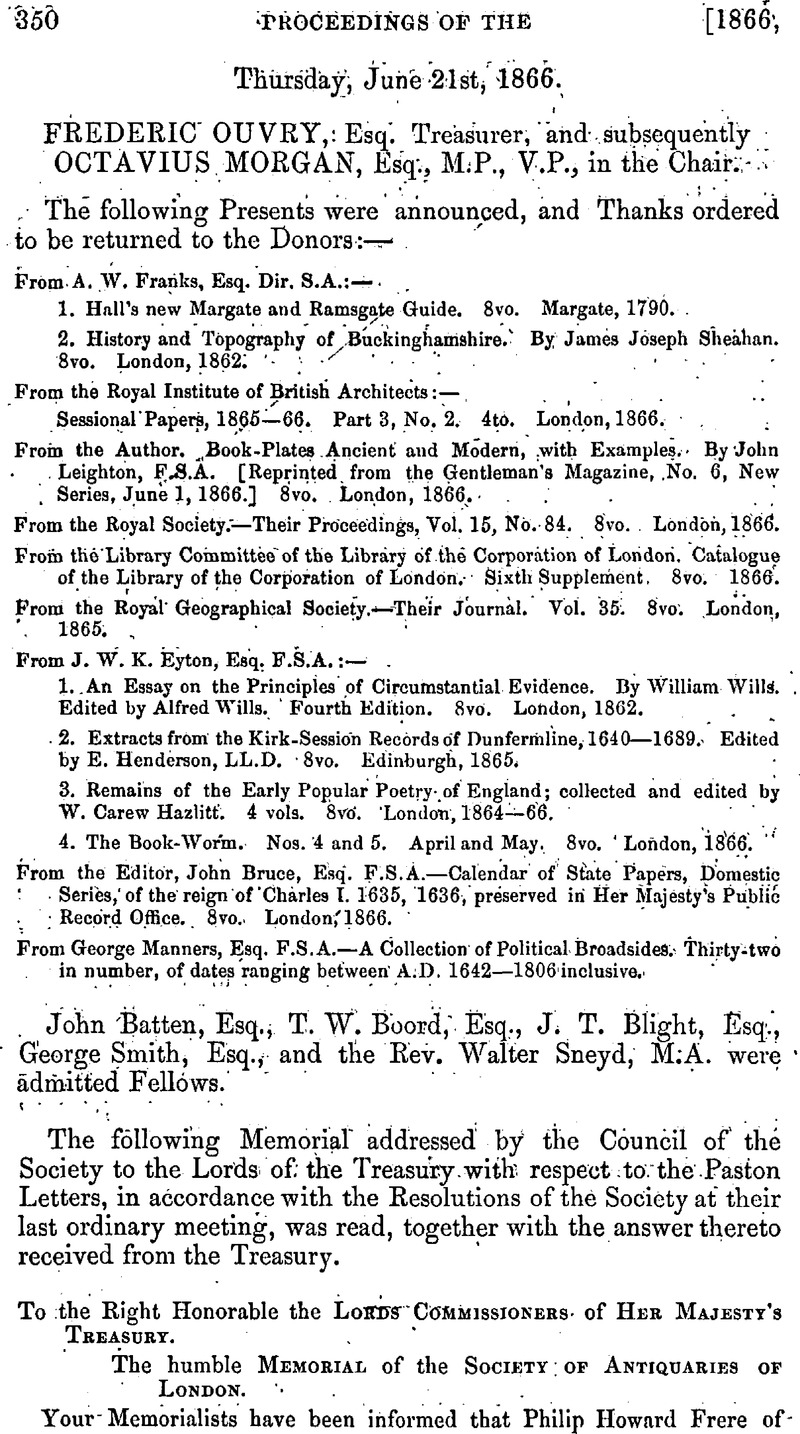No CrossRef data available.
Article contents
Thursday, June 21st 1866
Published online by Cambridge University Press: 10 May 2010
Abstract

- Type
- Proceedings
- Information
- Copyright
- Copyright © The Society of Antiquaries of London 1867
References
page 356 note * The bones were subsequently carefully replaced in the coffin; the position of them will be best explained by the following references:—
A. Ferule or lower end of pastoral staff.
![]()
D. Os ilium of the pelvis with the ulna bone of the fore-arm thrust through it.
E. Os sacrum.
F. Patella, or knee-cap.
G. Tibia, or shin bone.
H. Portion of skull with the mastoid process, lying next to the sternum.
I. The thyroid cartilage of the throat (ossified).
K. The upper part of the sternum.
L. The sternum and ribs.
M. The right scapula and-the clavicle thrust upon it.
N. The left clavicle.
O. Part of the pastoral staff.
P. The paten, with fragments of skull upon it.
Q. Metal ring belonging to the pastoral staff.
R. Part of chalice.
S. Part of the ischium of the pelvis.
Note.—The phalanges of the fingers are collected in two heaps on each side of the centre of the coffin, and the dorsal and lumbar vertebræ, with various ribs, lie confusedly in the middle. One arm bone, os humeri, lies to the right of the shin bone marked G.
page 358 note * For forged charters of Henry II. see Proceedings, 1st S. ii. 233.
page 361 note * Livy, History, lib. i. chap. 6.
page 361 note † See Military Architecture, by Violet Le Due, especially for the extensive use of wood in all early fortifications. Wooden towers on stone walls are represented on Trajan's Column.
page 361 note ‡ Livy, History, lib., i. cap. 6 and cap. 26. A trench or fossa round the Palatine made by Romulus. He states that a wooden beam was placed across the road as a yoke for Horatius to pass under for the murder of his sister, and was preserved at the public expense to his own day. This could only have been done because if was carried across from one bank to the other, above the heads of the people using the road.
page 362 note * Livy, History, lib. i. chaps, xi. and xii.
page 363 note * Livy, History, lib. i. chap, xxxiii.
page 364 note * Livy, History, lib. i. chap. xxx.
page 364 note † Livy, History, lib. i. chap. xxxv.
page 364 note ‡ Livy, History, lib. i. chap. xliv.




